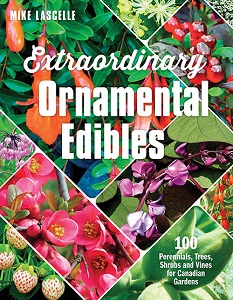 Eucalyptus camaldulensis (syn. ‘Itara’) The River Red Gum is named for its striking reddish-orange wood which is used to make furniture. This widespread species is commonly found around inland water sources. It is a large tree (grows to 90’+) with white juvenile bark that matures with greys and reddish brown tones that peel. Develops a twisted habit under drier conditions.
Eucalyptus camaldulensis (syn. ‘Itara’) The River Red Gum is named for its striking reddish-orange wood which is used to make furniture. This widespread species is commonly found around inland water sources. It is a large tree (grows to 90’+) with white juvenile bark that matures with greys and reddish brown tones that peel. Develops a twisted habit under drier conditions.
 Gossypium sturtianum – The Desert Rose goes by many names including Cotton Rosebush, Darling River Rose and Australian Cotton. This drought tolerant shrub grows 3-5′ high and bears hibiscus-like blooms of pink, white or pale lilac, with a central red blotch. It is the floral emblem for the Northern territory and has an average lifespan of 10 years.
Gossypium sturtianum – The Desert Rose goes by many names including Cotton Rosebush, Darling River Rose and Australian Cotton. This drought tolerant shrub grows 3-5′ high and bears hibiscus-like blooms of pink, white or pale lilac, with a central red blotch. It is the floral emblem for the Northern territory and has an average lifespan of 10 years.
 Grevillea eriostachya (syn. ‘Kaliny-Kalinypa’) – The Honey or Yellow Flame Grevillea is a shrub growing 5 to 7′ high with bottlebrush flowers that are generally borne with the rains. These emerge green but mature to a golden yellow, with nectar that is highly attractive to birds. The coarse needle-like foliage is greyish-green and is covered with fine hairs on the upper surface.
Grevillea eriostachya (syn. ‘Kaliny-Kalinypa’) – The Honey or Yellow Flame Grevillea is a shrub growing 5 to 7′ high with bottlebrush flowers that are generally borne with the rains. These emerge green but mature to a golden yellow, with nectar that is highly attractive to birds. The coarse needle-like foliage is greyish-green and is covered with fine hairs on the upper surface.
 Ficus platypoda (syn. ‘Ili’) – The Desert or Rock Fig is a small tree (growing to 25′ tall) that is native to central and northern Australia, as well as Indonesia. The oval-shaped leaves are quite thick and waxy-looking. It bears small (about the size of a marble) orange to red edible fruits that the Aborigines used to preserve as dried fruit cakes. This species also develops multiple stems.
Ficus platypoda (syn. ‘Ili’) – The Desert or Rock Fig is a small tree (growing to 25′ tall) that is native to central and northern Australia, as well as Indonesia. The oval-shaped leaves are quite thick and waxy-looking. It bears small (about the size of a marble) orange to red edible fruits that the Aborigines used to preserve as dried fruit cakes. This species also develops multiple stems.
 Allocasuarina decaisneana (syn. Casuarina decaisneana , ‘Kurkara’) – The Desert Oak is a fire-resistant species of tree whose juvenile form has a distinct thin columnar form. These slowly mature to single-stemmed small trees (30-45′ tall) with a spreading habit. The foliage is composed of green branchlets that much resemble pine needles.
Allocasuarina decaisneana (syn. Casuarina decaisneana , ‘Kurkara’) – The Desert Oak is a fire-resistant species of tree whose juvenile form has a distinct thin columnar form. These slowly mature to single-stemmed small trees (30-45′ tall) with a spreading habit. The foliage is composed of green branchlets that much resemble pine needles.



